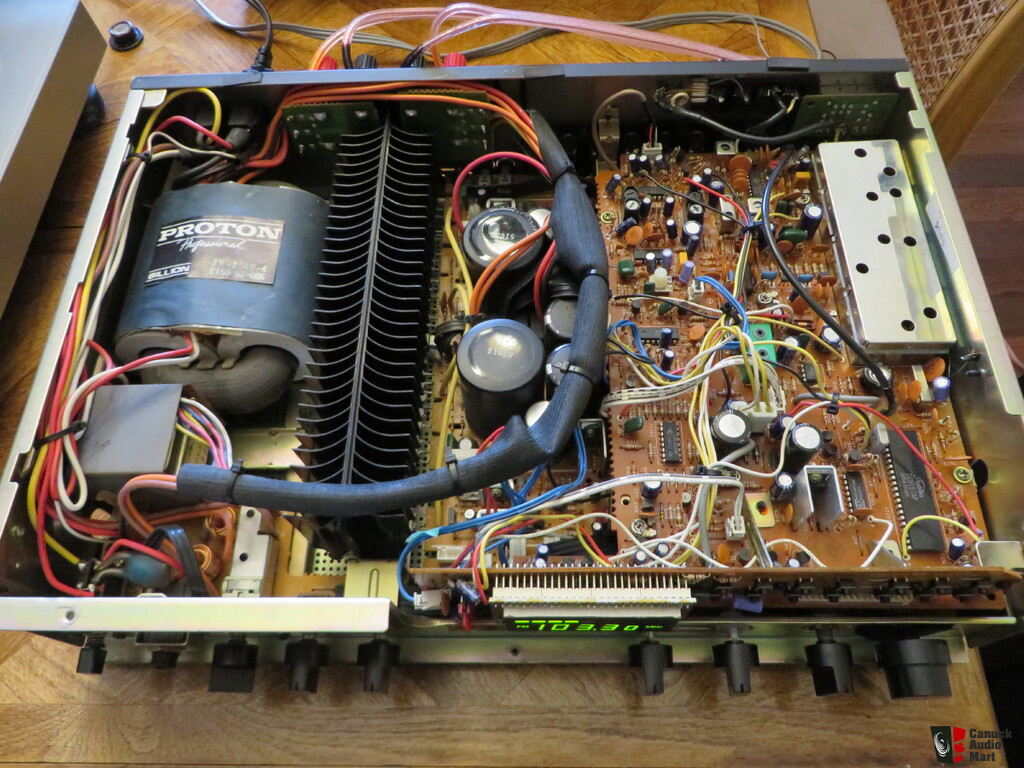Uncle Bambi
Funky Tut
I saw this one at the local swap meet on Saturday. I have never heard of Proton but the unit was heavy and appeared well built, and at the price he was asking I figured I'd take a chance (also, it looked like a better version of my NAD 701). If anyone has some in-depth knowledge of this brand/model, I'd love to be persuaded to save it.
I brought it home and did a bit of research..... not too much info to be found. I plugged it into my DBT, and fired it up. No right channel, but the left sounded good and the tuner worked great. So, I pulled the cover (which is what I should have done first, and was mildly astonished.
The first thing I noticed was that there was a power supply capacitor missing:

Then, I found out that it wasn't really missing, after all:

Turns out, it had "bulged" itself right off the PCB:

Also - it appears that they bought their glue from the same vendor as Sansui:

This has got me wondering if this thing is worth saving. I've no real use for it, and I do have other projects waiting on the stack. I haven't grabbed the schematics off of HiFi Engine yet, but looking at the layout I'm guessing that popped cap is the reason that the right channel is out. The capacitor arrangement is mirrored on the other side of the PCB, suggesting two identical signal paths. Might be an easy "fix" to get it running..... but then I'll need to address the glue, and that one popped cap calls all the rest into question so I'd probably be remiss if I didn't do a complete re-cap on the unit.
Ugh.
I brought it home and did a bit of research..... not too much info to be found. I plugged it into my DBT, and fired it up. No right channel, but the left sounded good and the tuner worked great. So, I pulled the cover (which is what I should have done first, and was mildly astonished.
The first thing I noticed was that there was a power supply capacitor missing:

Then, I found out that it wasn't really missing, after all:

Turns out, it had "bulged" itself right off the PCB:

Also - it appears that they bought their glue from the same vendor as Sansui:

This has got me wondering if this thing is worth saving. I've no real use for it, and I do have other projects waiting on the stack. I haven't grabbed the schematics off of HiFi Engine yet, but looking at the layout I'm guessing that popped cap is the reason that the right channel is out. The capacitor arrangement is mirrored on the other side of the PCB, suggesting two identical signal paths. Might be an easy "fix" to get it running..... but then I'll need to address the glue, and that one popped cap calls all the rest into question so I'd probably be remiss if I didn't do a complete re-cap on the unit.
Ugh.
Last edited:



